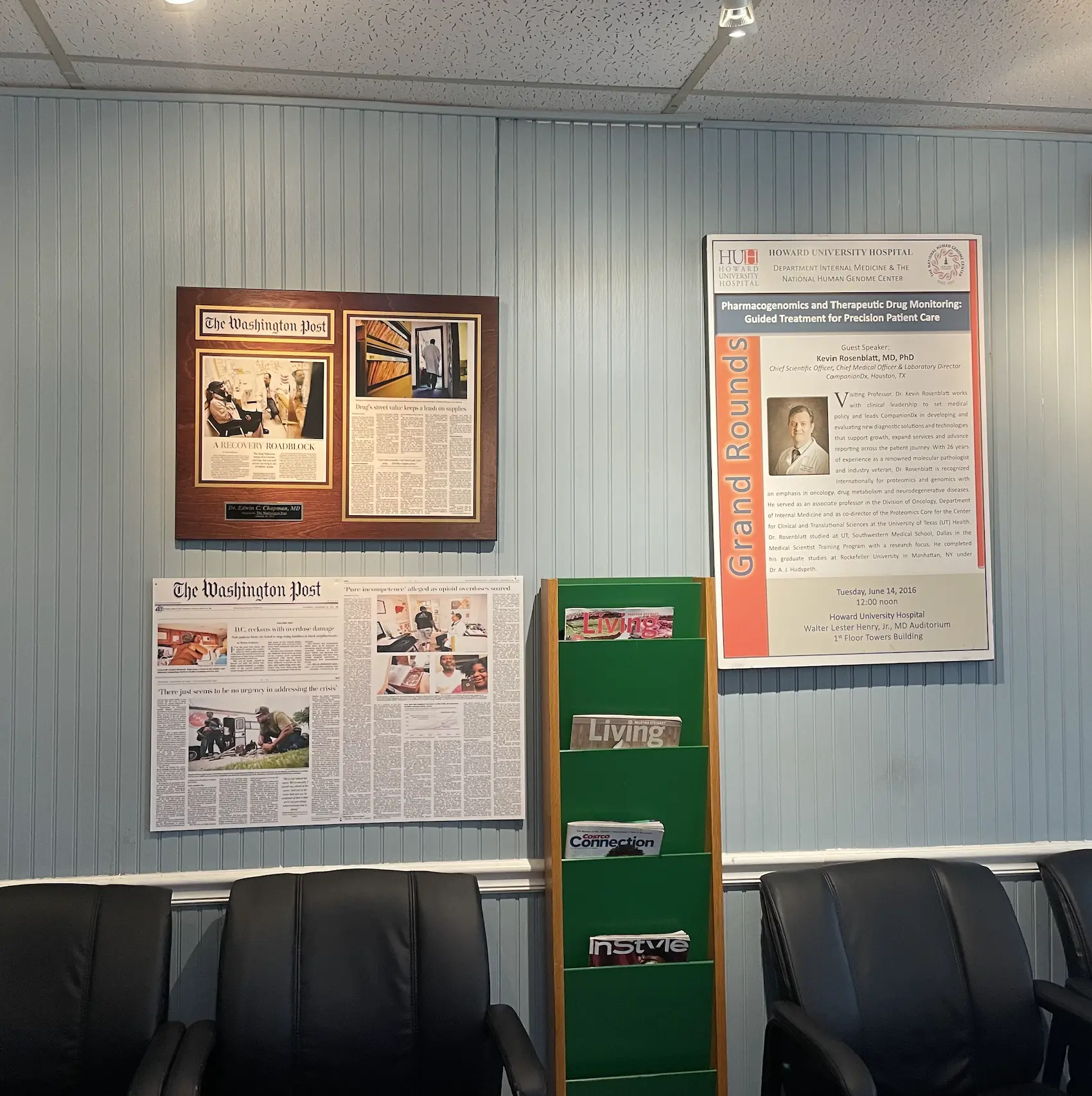
From the very beginning, Dr. Edwin Chapman was extremely welcoming and eager to share his work. In response to my introduction email, he not only invited me into this clinic but attached numerous links to articles, scientific papers, presentations, and talks he had either given or found to be informative regarding the opioid epidemic in the United States, and, specifically, Washington, D.C.
Throughout the week leading up to my visit to this office, I received many more emails from him just like the first, all with a plethora of information regarding drugs, trauma, death, and, most importantly, a glimpse of hope. Before I even met Chapman, I knew that he was a man who wanted to share his work and his world with me for the sole purpose of raising further awareness of the opioid epidemic that has been ravaging his community for years.

As I walked into his clinic for the first time, I didn’t quite know what to expect. As a medical student, I have entered many doctors’ offices but usually in the shoes of a clinician. This time, I was entering this office as a journalist—I had to remind myself that the goal of my conversations was not to gather a patient history, but rather, a person’s history. I was eager to learn about the opioid epidemic beyond the medicine to the lived experiences of the community.
The waiting room at Chapman’s office is filled with posters of presentations he has given, photos of him shaking hands with more people than I could ask him about, and reporting pieces that have meaningfully covered the opioid epidemic in D.C. This theme continues throughout the halls of his clinic; it sets the tone in each and every patient room and carries into his office all the way in the back.
Our initial interaction consisted of talking for hours in his office, although he did take breaks to see patients. As he sat at his desk updating patient records and filling their prescriptions, he would just talk. His head was filled with so much information about the history of addiction and how it has evolved in Washington, D.C., the policy changes that need to be made to improve access to harm reduction, and his frustrations with the current state of public health and public policy. I quickly realized that he was an open book, not only willing to share his experiences and knowledge with me, but also allow me access into his patients’ worlds. Given my clinical background, Chapman was trusting of me to respect and maintain the privacy of his patients.

Over the course of my investigation, I found myself going back to Chapman’s clinic many times. He introduced me to his case workers who had experienced addiction themselves or supported a loved one battling addiction. He identified patients who he believed would feel comfortable speaking with me and gave me space in his clinic to sit down with them privately. It was clear that the relationships he had built with his patients had instilled a sense of trust, and that this trust extended to me because of it.
His patients were willing to chat about themselves—their interests and passions—but the sensitive and stigmatized culture surrounding addiction could not be dismantled within a matter of minutes in a doctor’s office. I understood that as someone coming from outside the community, these folks did not owe me their stories.
The distance between us was not only their experience with addiction, but also our differing backgrounds and identities. It was my responsibility as a journalist, and even a medical professional, to hear these stories and do justice by them through my investigation. I had to keep power dynamics and my outside identity top of mind to make sure I was never being exploitative to those who had shared so openly with me.

On my last day visiting Chapman’s clinic, he invited me to join him while seeing a patient. My background as a medical student was put to the test while working with him to tease through the details of this patient’s recent hospitalization. Watching him interact with this patient reminded me of all that Chapman was. He has been doing this work for decades and has experienced firsthand the brutal consequences of this country’s opioid epidemic, having lost patients and friends along the way. Despite all of this, he holds on to hope above all else; he believes in every patient who walks through his clinic doors.
This hope comes through across all his work—not only in the physical space that he has created for his patients, but as he confronts the structural barriers that threaten the health and safety of his community every single day.












